Art Publications: Art Basel and the surrounding fairs
Author: Marija Hristova
Photographs: Marija Hristova,
Ilija Prokopiev
Published on: 28.02.2019
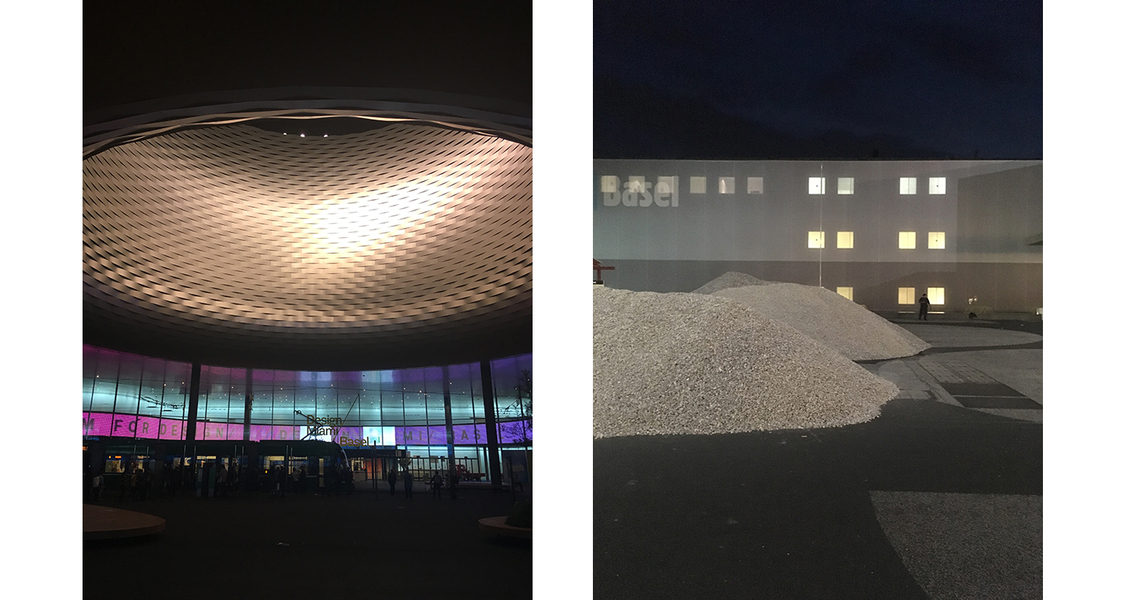
Messe Basel at the time of Art Basel 2018; left: the hall designed by the Swiss architects Herzog & de Meuron, right: site specific installation Basilea 2018, detail
Art Basel, the contemporary art fair, is an immense and highly commercialized event that attracts art professionals and admirers from all over the world. A large river of people flows into Basel that week in June. The whole city becomes a vibrating and multilayered art fair. Just a walk around the city center makes it clear that a major artistic event is under way. This is visible through the various and numerous fairs scattered all over the city such as I never read - an art book fair held at Kaserne complex and Photo Basel - specializing in photographic art and held at Volkshaus - both within a radius of a few hundred meters from the main fair complex, as well as the Art Basel’s Parcours program, which includes site specific installations in public spaces throughout the city.
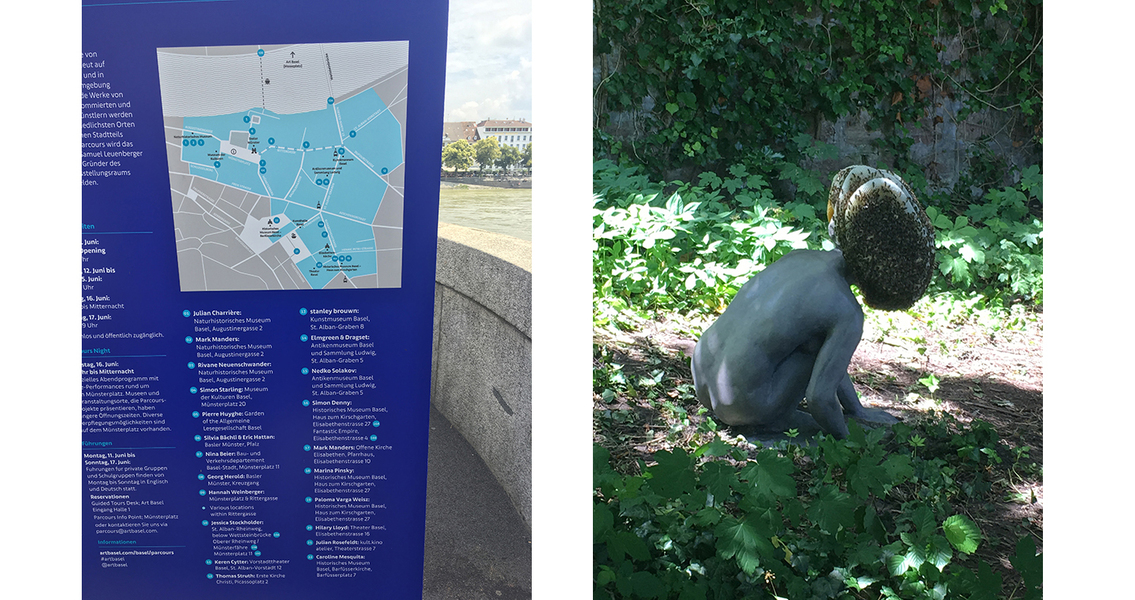
Parcours 2018; left: city map of the site specific installations, right: Pierre Huyghe, site specific installation in Basel old town
In all that clutter with various curated exhibitions, gallery presentations and artists’ talks what catches our interest is the art publication, its condition and its significance. Perhaps, not compared to the spectacular exhibitions and the great works of the past and the present, but viewed in its contemporary context and its current state of development. No matter where the main emphasis is placed, the books, the publications and the magazines, within these events, always take a significant part and open a completely new field of experiences where important cultural, communicative and artistic segments are intertwined.
Art book publishers: I never read 2018
In the context of art publications and books, print media is historically perceived as an alternative space pervaded by the artists, so they can document their exhibits, works and ideas; it is seen as a democratic medium available to both artists and the public; but also as a particular space for autonomous artistic projects not limited to galleries or institutional settings. All these ways of using the white page examine the borders of print media and the space of its reception, open up opportunities for free projects enabling their existences outside of the medium, and allow for the transformation of audiences perception of the artwork.
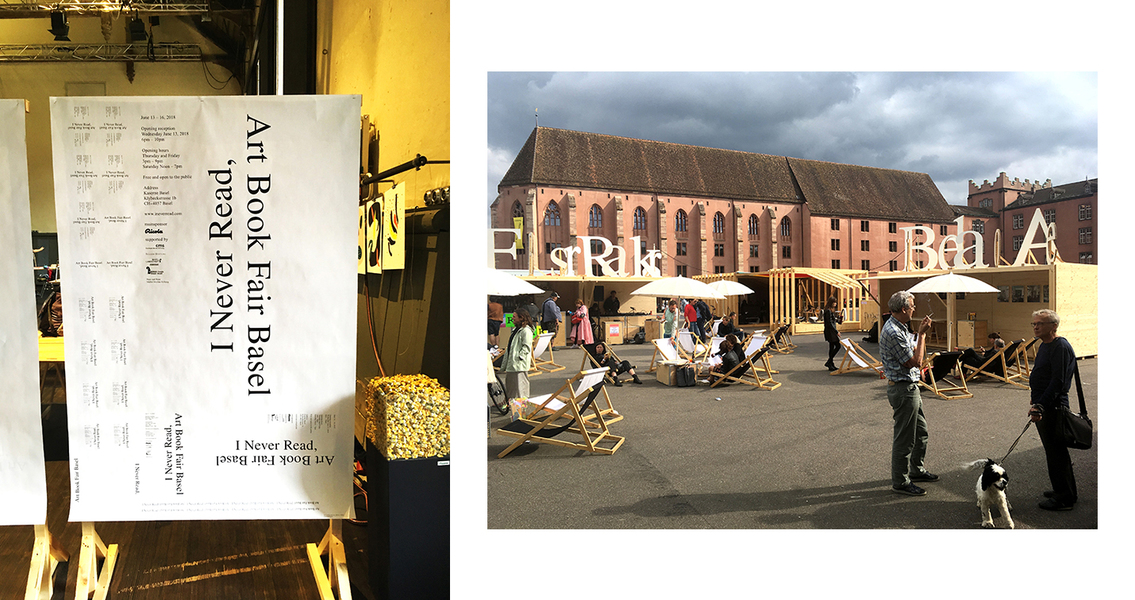
I never read Art Book Fair 2018, Kaserne Basel
Both the editions and the publishers’ and the artists’ positions at I Never Read 2018 could help us develop an understanding of today's state of the art book and the world around it that emphasizes the experimental approach to the use of the medium in accordance with its content and idea, as well as the transformational capacities that it possesses, namely, the rapid transition from book to exhibition, to performance, or to video. As an additional feature, one can also observe the use of social sciences’ tools, both in the work process and in the presentation of the work.
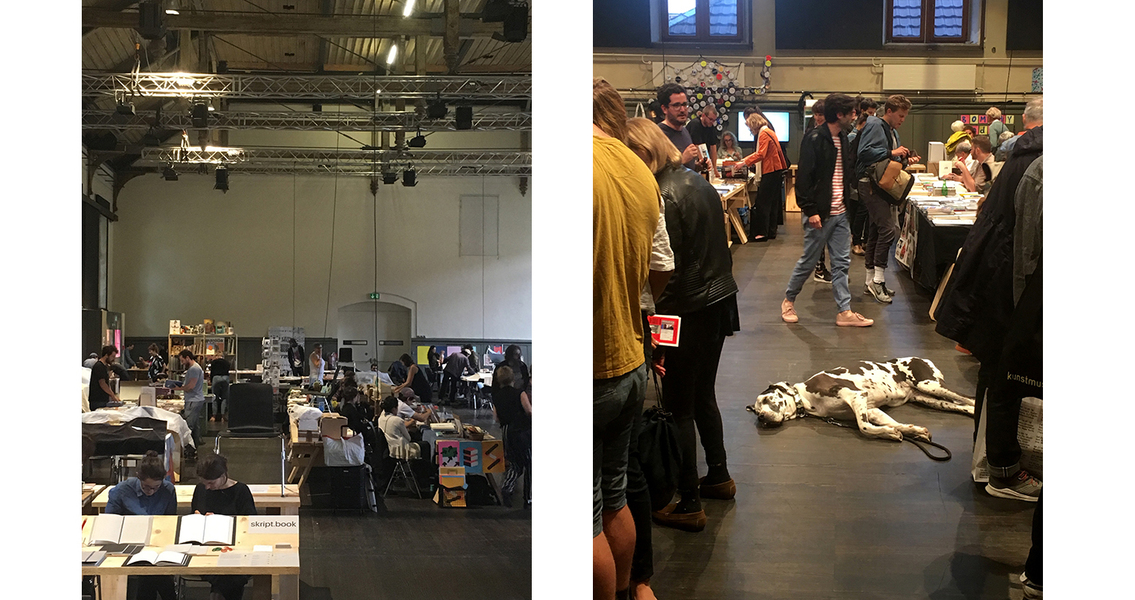
I never read Art Book Fair 2018, Kaserne Basel
Quick sequences: Asthenia zine is an independent zine founded in Athens with the following concept: every edition of the zine is accompanied by an exhibition featuring all the authors in the edition. The authors send a picture, text, or a drawing on a given topic, their contribution may, or may not, correspond with the work that will be exhibited, in the form of its continuation. Exhibitions take place at different locations in Athens. \ But we listen is a collective and experimental project founded in Basel, which is based on the creation of an archive of drawings related to the process of listening versus seeing, by researching how the senses work during the drawing process. \ Hakuin Verlag from Zurich describe their publishing ethics: "Our publishing house is designed for experiments with images, words, sounds and imageword constructions. Technologies and globalization advance, streams of images flood us, thereby new cultures and worlds arise. New strategies are needed. Substance relevant to society shall be published." \ Bolo Paper from Milan, creates a lab for self-publishing, with the idea and goal that the selected projects will find their natural form of paper. \ Stingray Editions from Basel, develops projects in a multitude of shapes, dimensions and contexts. At the heart of the collaborations with artists, writers, musicians, scientists lies a dialogue that defines the format of each edition separately.
STINGRAY is altering
STINGRAY is transforming
STINGRAY is floating
STINGRAY is a performance
STINGRAY is a trip
STINGRAY is a book
STINGRAY is an undercover agent
The documentary and the fluidity of space of print media: Unlimited - Art Basel, Photo Basel, 2018
1 \ Melancholic Road, Alnis Stakle, self-published, 2015
One of the books exhibited at Photo Basel was Melancholic Road by Alnis Stakle (1975, Latvia). It is a samizdat book in a limited edition of 50 copies each of them unique. The pages of the book are consisted of 20-year-old original oil transit customs declaration, found by the author in an abandoned Russian military base near the Russian-Latvian border. Bind together in between them are small-format photographs that show screenshots of popular amateur You Tube videos that document controversial events and phenomena from Russia, such as mass fights, accidents, xenophobia, homophobia, and the like. The book has a hardcover with an appearance of a bureaucratic file. The pages of the found archival material represent printed forms, handwritten and stamped, each of them distinctive and different from the other. All this makes each copy of the book a unique piece of art. Alnis Stakle is a photographer, but his work here is curatorial. By merging the original archival material with screenshots that have the characteristic to be self-documenting and self-representative in a cultural sense, he merges two of the possible ways to read the documentary: the objective reality of the archival material is emptied of its primary meaning and in such a way it becomes a surface for the new type of viral documentary, subjective in its representation of the reality. Taken out of their original context, they both become a powerful visual impulse for redefining the documentary in a time of new communications.
2 \ Ponte City 2008-2014, Mikhael Subotzky & Patrick Waterhouse, Steidl, 2014
At the Unlimited exhibition, at Art Basel 2018, we could see Ponte City 2008-2014, an installation with photographic and archive material, by the authors Mikhael Subotzky and Patrick Waterhouse. Ponte City, the 54-story apartment building in Johannesburg, has kindled Subotzky and Waterhouse's interest in exploring its visual, architectural and social functions. Built for the rich whites at the peak of apartheid in the 70s, a decade later, this building becomes a symbol of urban decay. Radical changes in Johannesburg led to a transformation in the structure of its inhabitants, so the wealthy residents moved to the suburbs, and migrants from the rural parts of South Africa, as well as immigrants from across the continent settled in Ponte. During a time span of 6 years, the authors constantly documented the building, and in the process they got to know the remaining tenants, their everyday habits and life, and collected a large archive of documents, objects and photographs. They photographed the daily activities of residents, as well as abandoned apartments, doors, windows, home items. As a result, the book becomes a complex narrative of Johannesburg's social history, examining the relationships between the building, ideology, and human movements. The installation, in its own right, contains documents, personal objects and photographs found in the abandoned apartments, as well as authors’ photographs of the inhabitants and of different building sights, placed on the wall as if on a detective board. The visual features of the yellowed documents with holes and folds, the torn photos, the abandoned objects from the past and the intuitive connections between them create a completely different, poetic image and impression in the gallery space.
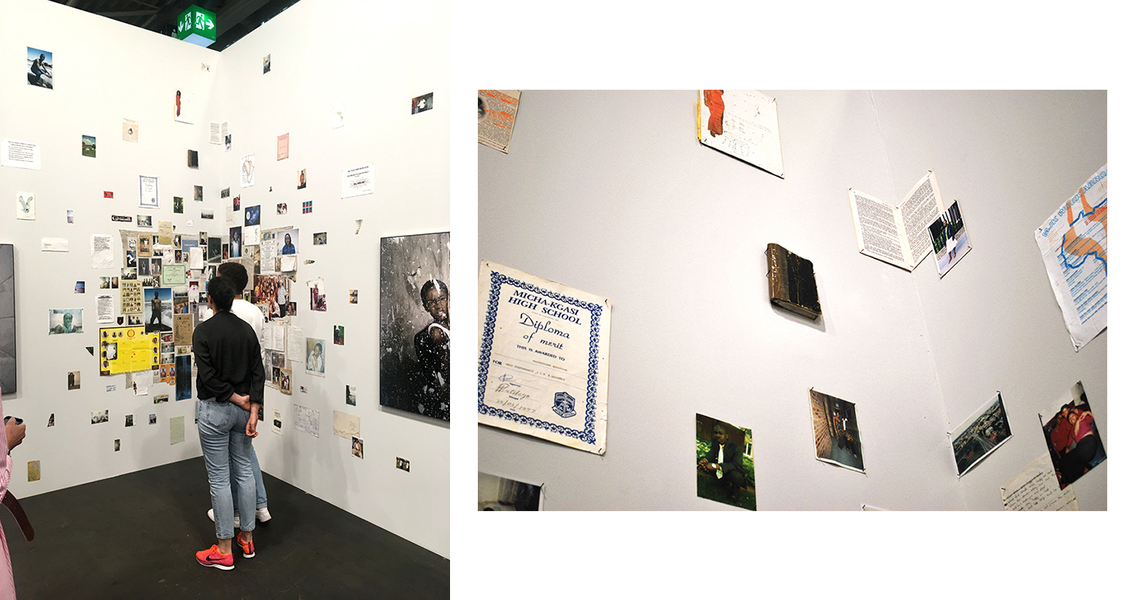
Mikhael Subotzky & Patrick Waterhouse, Ponte City 2008-2014, photographic installation with archival material
3\ A Hundred Times Nguyen, Alfredo Jaar, Moderna Museet, 1994
In 1991, Alfredo Jaar visited detention centers for Vietnamese refugees seeking asylum in Hong Kong. In one of those centers he encountered the little girl Nguyen and, with her permission, made a series of photographs within the space of few seconds. The book, created from these photographs in 1994, contains 24 sections of four photos with minimal changes in the head movement of Nguyen, which are positioned one after the other, in all possible sequences. This project was realized in several different media. The initial photographs are printed in a book, and a video is also recorded. Thus, the installation at Unlimited 2018, featuring the photographic sequences, the book and the video, represents the document of that day, one movement of Nguyen and those few seconds in 1991, as in a memory temple. The frozen image and the emotional moment of Jaar’s memory create a poetic narrative, which seizes that transient moment and urges the viewers to experience that emotion and memorize the image of Nguyen.

Unlimited 2018, Art Basel
From the described examples of exhibited works, installations and similar projects that are linked with the book medium from the curated Unlimited exhibition part of Art Basel 2018, the production and the positions of the publishers at I never read 2018, as well as the innovative photographic books exhibited at Photo Basel 2018 we came to two conclusions. On the one hand, a book can be an idea on whose basis the multimedia production of the work is developed, and, on the other, the very research of the work, the documentation of visual, textual, archival material, and its curating, easily moves through various spaces: book-gallery-installation-performance-video. In the midst of an art world replete with information and news that correlate it with science, market, history and politics, exists this concealed place of creativity that artists use to create an entire multi-layered media world around the idea of their work. The work jumps off the page. By themselves, these works don’t become more powerful, don’t radiate with greater sincerity, nor do they have greater value, but they represent artworks-experiences that remain as fluid, fresh and astonishing in one’s reception, memory, and in the thought about them.